Chris Baty's Blog, page 124
May 15, 2017
NaNo YWP: 3 Basic Steps to Writing a Mystery Novel
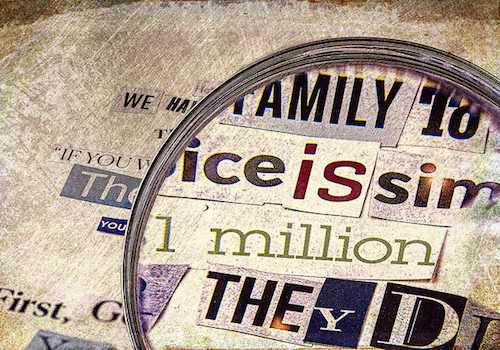
In addition to the main event every November, NaNoWriMo provides free creative writing resources to educators and young participants around the world through our Young Writers Program. This month, we’ve asked some of our young writers to share their own words of wisdom. Today, YWP participant Sierra Maestas shares her experience as a first-time mystery novelist:
There’s always something I’ve enjoyed about mysteries. The unknown endings, sporadic evidence, and red herrings are thrilling! Ever since middle school, I have wanted to write my own mystery, but there’s always been a looming fear behind it. What if my plot was lame? What if my characters weren’t relatable? Could I keep an audience on their toes like my favorite books did? Well, this past November, I decided to finally try my hand at writing a mystery for my second NaNoWriMo novel.
More than other stories, a mystery’s plot has to fit together in just the right way, otherwise the reader will get lost or the climax and reveal won’t pack a punch the way they should. In writing my mystery novel, I had to make sure that the basics of mystery writing were present:
1. Create a valid motive.I had to make sure that the bad guy had a valid reason to be bad, and that it was believable why she was doing what she did.
2. Connect the dots.I had to connect the evidence smoothly, so my protagonists could figure it out. I couldn’t make the clues too easy, yet I also couldn’t make them seem random. On top of all that, I had to make sure I wove in the secondary characters, and arrange the events in a logical order so the plot would progress.
There were moments where I didn’t know what should come next, or what the characters should do. There were scenes that I thought made sense only to have my family tell me they didn’t. But then there were the great moments, the ones where I would get so excited and type for hours on end. Moments where sudden ideas would turn into incredible scenes that would end with me screaming “YES!” at the computer screen. Moments where I felt like I was alongside my characters. I could feel their fears and frustrations with them as they tried to figure it out. Through it all, there was always the drive of finishing the story.
Finally, I did it. My characters had triumphed, and I had reached the 20,000 word goal–double that of my first novel. I’d done what I didn’t think I could do, and I was proud of it. The story is definitely not perfect, and I’m still revising it, but it makes me happy to know that it is mine. My goal is to get it published in the next year or two, even if it’s just for myself.
So whether you are writing a mystery like I did, a romance novel, or a sci-fi story, go for it! Don’t doubt yourself. It’s ok to get stuck, or frustrated, but then you just push through and keep going. Don’t give up! I believe in you!

Sierra is an 18-year-old girl who just graduated high school. Besides writing, she loves music, sparkles, and the color orange. She enjoys meeting new people and can make friends quickly. You can usually find her with her earphones in, singing loudly just about anywhere. Sierra lives in Denver, Colorado with her parents, her two brothers, and her two dogs. She hopes to write as a future career.
Top photo by Flickr user Sheila Sund.
May 12, 2017
NaNo HQ’s Creative Half-Day
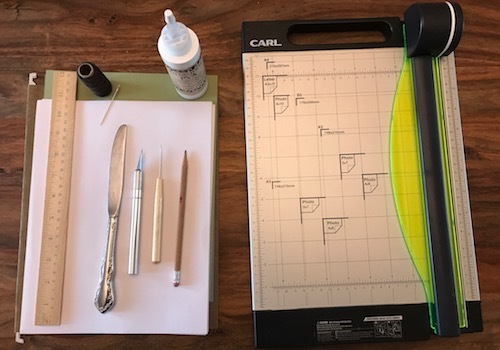
NaNoWriMo is all about unleashing your creative potential. Here at NaNo HQ, we always try to walk the walk, not just talk the talk. We understand that sometimes replenishing your writer fuel is necessary to continue working on creative projects–and that being held accountable for what you want to accomplish is never a bad thing.
To that end, the staff took a Creative Half-Day last month to create some intentional time around pursuing our interests outside the office, so we could harness some of that creative energy and bring it back to NaNoWriMo.
The rules?
1. We held each other accountable.We stated our intentions in the morning, and had to bring something in for show-and-tell the next day. It’s hard to back out on your projects when you know others are expecting to see what you’ve accomplished.
2. No computers.We love NaNo and our online community, but sometimes we dive into NaNoLand (or the much less fun Spreadsheet Land, or Wrestling-With-HTML Land), and reappear days later, squinting into the sunlight, wondering how much time has passed. In order to recharge our creative juices, we had to step away from the screen.
3. We took time for reflection.Each staff member got to choose some creative endeavor they enjoy doing, or don’t usually make enough time to do, or have never done but always wanted to try. But after the fun, we had to reflect on how our activity helped us boost our stores of creativity, start a good creative habit, and (most importantly) how it helped feed our work with all of you, our amazingly creative participants!
Turns out our staffers are multi-talented, and have a (sometimes surprising!) range of creative interests. Here are just a couple of reflections from our Creative Half-Day activities:
“I’ve always loved drawing and painting, but I’ve never felt the same drive to share my art that I have to share my writing. It’s always been something I’ve done for myself–a zen, meditative way to be creative while shutting off the running commentary in my brain, rather than searching for the perfect word.
In the last few years, my drawing has dropped off, so I decided to take a figure drawing class for my Creative Half-Day to get back into the swing of things. During the class, I couldn’t help drawing (no pun intended) parallels between picking up that 2B pencil for the first time in years, and writing a first draft. If I tried too hard to capture the details of the figure and make everything perfect, I would feel frustrated and discouraged. If I set smaller goals for myself (“Ok, I’ll be happy if I just get his hair right,” or “I’m just going to get the general lines down,”) I was able to fall into that meditative state of mind. I know I’m rusty, but just taking the plunge and committing to doing my best in the classroom for those three hours helped me remember that though making art is hard work, finding those small, achievable, joyful steps makes the time fly by.”
– Katharine Gripp, Communications Manager
“I decided to try a hobby I’ve always admired: hand bookbinding. Armed with a how-to guide, a ream of paper from the office, and wide-eyed enthusiasm, I picked up the rest of my materials at the art supply store.
At home, I laid out all my stuff and created basic signatures (the folded stacks that get combined to make a book). The first threadings were super-easy, and then I ran into trouble. I had to make a square knot—which, per the internet, is like a simple, Cub-Scout-level deal—to bind my first two signatures. And man, I could not get this. I tried/retried/tangled/untied for literally an hour and a half. I felt very dumb.
My creative time is limited: at 5:00, an excited toddler arrives at my house from daycare. That witching hour hit before I tie-umphed over my knotty situation (this is why I don’t usually get to write for the blog anymore), and my book remained unbound.
Still, it felt good to have tried—and especially to have persevered when I’m so used to just closing a document when my writing gets difficult. I’m hoping to take an actual bookbinding class soon… or just find a local Cub Scout troop to show me what to do.”
– Chris Angotti, Chief Operating Officer
May 10, 2017
6 Ways Writing Can Help Your Voice Be Heard

In addition to the main event every November, NaNoWriMo provides free creative writing resources to educators and young participants around the world through our Young Writers Program. This month, we’ve asked some of our young writers to share their own words of wisdom. Today, participant Iris Vayle urges you to use your writing to help you speak up for things you care about:
“Let your voice be heard.”
“Stand up for yourself.”
“Use your voice.”
We all hear things like this at least once in our lives, whether it’s standing up against a school bully or standing up for what you believe in. However, things like this are often harder to put into action than they seem. Trust me on this one; I know. Standing up for yourself isn’t easy, but writing can give you a voice. Your story can empower you when nothing else can.
1. Connect your body and your brain.As a writer, I like to pound the keyboard, especially when I feel strong emotions. If I feel a rush of anger, fierce determination, or even just sadness, I want to convey it in writing. I can pass my fears on to a character and work out my feelings through their struggle. And I can infuse my characters with determination as they go through their trials and tribulations, which gives me strength when I go through my own. Sometimes, I just need to pour my emotions onto the page and see what comes out of that process.
2. Pull from your own experiences.Turn the bad things that have happened to you into character-shaping moments. Make the people that hurt you into your story’s antagonists. Create demons for your characters to fight, and let those demons wear the face of your own fears.
3. Know that you can make a difference.Bring attention to those things that are important to you. If you ever feel like you’re too young to make a difference, remember there’s always a way. Are endangered animals and their safety important to you? What about global warming? The way the world works? The injustices happening right under your nose? Write. Tell everyone what you think about these topics, and a variety of others, through the written word.
4. Channel your stress and anxiety.Write when you’re stressed too. Stress is powerful, but you are stronger. Anxiety, worries, anger, and fear all try to take over me. Sometimes they win. But don’t let them be the ultimate victor. Use your voice. Write what you know and what you fear. If you feel broken, depressed, like the world is beating you down and it’s winning, pour that emotion into a few paragraphs of writing. Who knows? Maybe you’ll get a great story out of it.
5. Connect with others.Writing is a great way to reach out to people who are struggling and offer them a helping hand. We’ve all read about characters who spoke to us or to our situation. You could be the author who changes someone’s life. Encourage those who are feeling down. Help those who need it.
6. Remember that writing is powerful.They say the pen is mightier than the sword, and they are right. A sword can can access the physical body, but writing reaches your emotional core. Written works can, and do, change lives.
Writing is your voice, especially when you feel like you don’t have one anywhere else. Use it. Speak out. And remember: be strong, be brave, and make yourself heard.
Iris is an aspiring author with big dreams. She enjoys reading, writing, making up characters and their backstories, and wants to code a video game. She is an avid traveler and has crossed the USA from coast to coast multiple times. She believes everyone should have a voice, no matter their age. Iris is currently trying to find a good story idea to write, as well as the motivation to edit it. She has written one novel and one short story, neither of which are published.
Top photo by Flickr user Andrew Butitta.
May 8, 2017
Books That Changed My Writing: Finding Architects to Help Build Your Novel

In this blog series, NaNoWriMo participants can share their experiences with books that have changed their writing life for the better. Today, NaNoWriMo participant Melinda Renken shares her thoughts on a book that has helped her create a solid foundation for crafting her writing:
I have a confession: I’m addicted to writing craft books. There. I said it. The first step is admitting the problem, isn’t that what they say? But I’m refusing an intervention. I will never give up my book habit.
Last August, I completed my MFA. I have been privileged to work with amazing faculty and with other talented students to improve my writing skills. But education doesn’t end once you’re presented with a (very expensive) piece of paper. Au contraire: my education is the foundation upon which I will build my 19th century Victorian mansion of a novel. Craft books have become the architects. Donald Maass’ The Emotional Craft of Fiction has revolutionized the way I am looking at my novel and my approach to finishing it.
There are a lot of craft books out there and for every gem there are at least four rocks. I’ve bought and read more than a few that only offered vague information that any student of Composition 101 could have written. But occasionally you run across those which completely transform your writing. I have reserved shelves in one of my bookcases for craft books that I feel must be reread yearly.
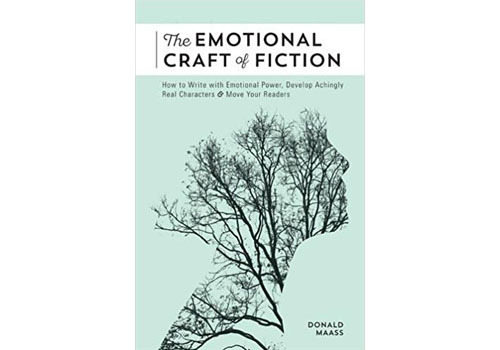 “Emotion is what drives the human experience. It is the reason I write. It seemed imperative that I learn how to control it and use it as a tool rather than fighting against it.”
“Emotion is what drives the human experience. It is the reason I write. It seemed imperative that I learn how to control it and use it as a tool rather than fighting against it.”Before I discuss Mr. Maass’ book, there are a couple I want to mention which I consider staples for any beginning writer. Stephen King’s On Writing tops my list. His fiction scares the crap out of me on a regular basis, but I love it. On Writing is part memoir and part craft and each time I read it, I learn from it. Anne Lamott’s Bird by Bird is another must-have. The advice she gives (to new writers in particular) is very helpful. I first read this book as an undergrad student and I think that her wisdom helped give me permission to declare: “I am a writer.” It took me a long time to be able to say that out loud.
I write historical fiction steeped in magical realism. My novel is a monster I’ve both worshiped and hated depending on when you ask me and whether or not I’ve been fed and watered recently. Donald Maass’ The Emotional Craft of Fiction has become my saving grace. In it, he teaches how to get at the story beneath the story; in other words, the art of creating compelling subtext. He discusses getting deep into the character’s skin so you can create dynamic characters that your readers can’t help but be captivated by.
I am prone to overflowing emotions, in life and in writing. This book appealed to me initially because I knew that my characters tend to be sloppy with emotion and it can come off as contrived. Emotion is what drives the human experience. It is the reason I write. It seemed imperative that I learn how to control it and use it as a tool rather than fighting against it. Mr. Maass’ book has given me the tools to accomplish the task.
I’ve read several good books about subtext, but none which really explained how to create it from a character-based standpoint–at least not in a manner that I grasped. Masss’ book is accessible. It’s this aspect which makes me value this book the most. He teaches from the widest view down to the smallest detail and even provides a handy checklist at the end. Most of his advice will be useful in revision, but I’m excited to walk down the path I discovered through reading The Emotional Craft of Fiction when I sit down to write my novel. I’ve no doubt there’s grand adventure to be found.

Melinda Renken earned her MFA in creative writing at Sierra Nevada College in August 2016. She is currently at work (in the painfully slow manner of a slug on tranquilizers) on her first novel. She expects to publish it sometime before civilization comes to an end. She and her husband live in Washington State. They are owned by two very spoiled cats. Details of her writing adventures can be found on her blog “Into the Mist” at www.melynnwrites.wordpress.com. You can follow her on Twitter and Facebook.
Top photo by Flickr user Artful Magpie.
May 5, 2017
Camp NaNoWriMo April 2017: Participant Survey
Hey, writers! If you participated in Camp NaNoWriMo this April, please click on the link above and take a few minutes to fill out our survey. We want to get your feedback so we can continue to improve the Camp NaNoWriMo experience for our whole community. As a little extra incentive, if you fill out the survey, you’ll also be in the running to win one of two $50 Amazon gift cards!
May 3, 2017
5 NaNo Lessons I’ve Applied to the Rest of My Life

Although our events currently only run during certain months throughout the year, the NaNoWriMo community remains year-round, and the things you learn while writing a novel can be applied to many different situations. Today, participant Anna Fagundes Martino shares some of the most important lessons that writing a novel in a month has taught her:
Every November since 2011, as soon as I post the “NaNoWriMo Participant” banner on my social media outlets, I hear two things from friends and family. One is, “You’re mad to tackle 50k words in a month.” The other is, “I wish I had the drive to do that sort of thing!”
I never said I’m not mad (I am a writer, after all). As for the drive… take the word of this former owner of the Pan-American record for Writing Procrastination: that can be taught. So much so that I applied what I learned in six seasons of November madness into other areas of my life that have nothing to do with fiction writing.
After all, most big deadlines can seem like the elusive 50k in November: an Everest of a situation. Whether you want to do it (e.g. get to dance at the Lindy Hop ball, finish a race for the first or tenth time) or you have to do it (e.g. a school essay, a job presentation), the first and irrational reaction, of course, is to panic and freeze, and then say “Nope, won’t do it. There are better people doing it already.”
That’s where the NaNo mind-frame comes in handy.
1. Break things down into manageable segments.Like in the beginning of November, we must break down the goal into manageable pieces. Fifty thousand words in a month equals 1,667 words a day. It looks more manageable–and our brains love whatever makes a task look easier. Instead of looking at the big picture, begin with the one phrase. I started to apply that to running: I am not the fastest, nor the one that goes the farthest, but mile by mile, I can finish the race.
2. Track your progress.Do you remember the cool wallpapers that appear at the beginning of the month, with all the number of words needed for each day, the funny incentives and uplifting quotes? Well, they are not only for November, they are for life: adapt them for the situation at hand. When you start noticing how far you’ve gone, you feel guilty about quitting–and inspired to fill out the rest.
(Extra points if you adjust the “You Should Be Writing!” meme for the project at hand as well. My favorite involves the Tenth Doctor looking rather miffed. It does the trick every time).
3. Remember that there are plotter and pantser situations in real life.Some writers are natural-born plotters: they make charts, outlines, character sheets and Pinterest boards covering all the minutiae of their novel. Some are pantsers: there is a story out there in the middle of that chaos; all you need to do is to find it.
There are situations that demand the “plotter” outlook–a school presentation must be thought about carefully, for example. Then there are situations that demand a bit of pantser courage, like grabbing the microphone at the karaoke party when you are shy, but also dying to sing. Adapt accordingly. The one sure way to lose if you don’t try.
4. Celebrate the small achievements.Nobody does this better than the NaNo crowd. We celebrate when we reach 10K, 25K, even when we get to write 1K in an awful, no good, “If you need me, I shall be in Australia” sort of day (Phantom of the Opera fans will get the reference). So why not do that with all the other developments in life? Break out the nice china or the fancy lipstick. Find support from like-minded folks. We NaNoNinjas have the online boards and the MLs–if you’re doing something, whatever it is, it’s highly plausible you are not alone. Your community is here to help.
When in a rut, remember that the first draft of everything is crap. Get it finished, by hook or by crook. Quote the encyclopedia. Do a song and dance. Add aliens to the text if needed–not recommended if you are doing, say, the AP History presentation, but, then again, if Lin-Manuel Miranda got away with a George Washington spouting hip-hop lines… anything can be done if you have enough research and the talent to back it up. And there lies the most important thing that NaNoWriMo taught me: if you can dream it, you can put it to paper.
So get it to paper–even if it’s not fiction. Don’t wait for November or any other special date.

Anna Fagundes Martino is a writer based in São Paulo, Brazil, and an editor at the Dame Blanche publishing house (www.editoradameblanche.tumblr.com/).
Top photo by Flickr user planetlight.
May 1, 2017
NaNo Interview: Tia Ross of Black Writers Events
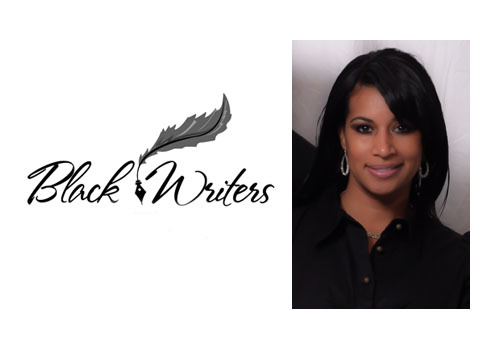
We feel so lucky that NaNoWriMo has such an amazing creative community of writers–and we feel even luckier when our participants are involved in other writing communities, activities, and groups! Today, we’ve interviewed Tia Ross, co-founder of Writeful Places and Black Writers Events, to find out more about the writing community she’s helped create:
1. Black Writers has been around for 20 years now! How did it get started, and how has the community grown and changed?After graduating high school, I wanted to write novels. My search for a good writers’ group taught me that not everyone could understand nor relate to my stories, which, at the time, were about growing up in South Central Los Angeles. My themes, plots, characters, and slang usage in dialogue made no sense to fellow writers in my new home of Dallas, Texas, trying to critique my work.
Those groups showed me how immensely I enjoyed editing. I began studying editing, honing my skill, and, after moving to Houston several years later, I began freelancing as a fiction editor specializing in African-American literature. I quickly realized that my new clients hadn’t studied the craft or business of writing at all, so I formed a local group and invited subject experts to help aspiring authors gain the know-how they’d need to succeed.
I taught myself web design and created a group website. This was 1997–years before the Internet was popular–but the site attracted attention from writers around the world, all interested in joining my little local group! I didn’t see much benefit for them in that, but the advantages of expanding online were obvious. I then decided to create what became the first Internet-based 501©(3) literary arts organization for Black writers. Membership grew from 39 to over 7,000 within the first two years. In 1999, that was quite a feat!
What has changed is that we no longer have the time to interact via the technology we used back then. On a day-to-day basis we now connect mostly via social media, but the emphasis has shifted to sharing information through physical and virtual events. In 2000 we launched Black Writers Reunion & Conference to great acclaim, and we offer writing retreat and getaways in tropical and other desirable locales.
2. What keeps you involved with the Black Writers community? What’s your favorite part about it?It’s that the need still exists for an organization providing the kind and quality of the programs we offer our community. It’s seeing the impact we make, the support to keep it up, the results of our efforts, and the accomplishments of those who’ve been integral to our story. My favorite part is the successes of original members like:
Professor Tonya M. Evans , who was promoting two poetry books in those days. She followed those with her first publishing law book, Literary Law Guide for Authors: Copyright, Trademark, and Contracts in Plain Language. She’s since published several more in that series and offers publishing consulting, business entity, trademark and copyright registration services to help writers, creators, and innovators protect and maximize the value of their intellectual property and brand. Remarkably, she is one of only five speakers, out of over 100, who have presented at all seven of our Black Writers conferences.ReShonda Tate Billingsley , who rejected numerous publishing offers and self-published her first book, My Brother’s Keeper, in 2001. She’s since authored more than 40 books, with two movie adaptations and numerous movie options.
They’re inspiration for me.
3. How is the organization planning to evolve its community in the future?That involves another author and leader who inspires me, Rekesha Pittman of Get Write Publishing. Rekesha is a publishing strategist who not only coaches writers to publication but has also been organizing writers’ events of her own across the country. We’ve recently partnered to form Writeful Places LLC, which is dedicated to educating, nurturing, and supporting all authors worldwide. Black Writers Events will continue to offer conferences and retreats as a subsidiary of Writeful Places.
4. How can people get involved in the Black Writers community, or find out more about it?Subscribe at http://blackwritersevents.com for announcements on upcoming Black Writers events. Those interested in Writeful Places may sign up at http://writefulplaces.com. You can also connect with us on social networks.
Tia Ross is an event strategist and editor. She’s the force behind Black Writers Events, co-founder of Writeful Places LLC, and managing director of The Ovation Group, which handles site and venue selection, contract negotiations, event management, travel planning, writing, editing, virtual event coordination, project management, and technical services for professional speakers, authors, and event planners. Once named one of the ‘Top 37 book doctors in the U.S.’ by Writer’s Digest, she edits nonfiction, fiction, web content, and technical and business documents for clients worldwide. You can follow her on Twitter or Instagram @TiaTRoss.
April 29, 2017
Writing Affirmations, submitted by Camp NaNoWriMo participants....
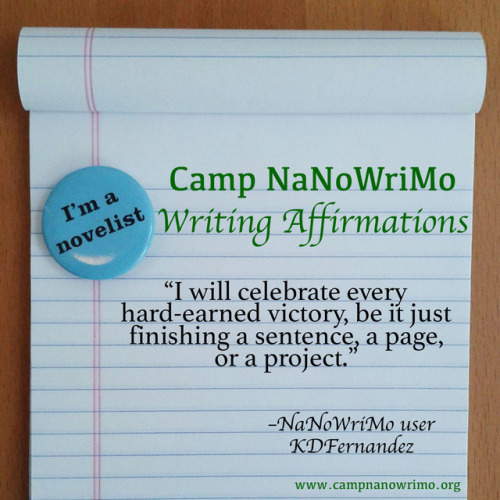
Writing Affirmations, submitted by Camp NaNoWriMo participants. (Text reads: “I will celebrate every hard-earned victory, be it just finishing a sentence, a page, or a project.” By NaNoWriMo user KDFernandez)
April 28, 2017
Camp Pep: You, the Brave Adventurer

Camp NaNoWriMo is nothing without you, our incredible participants. Today, Vic, a fellow Camper and member of the Young Writers Program, offers you some pep:
You are a writer. This means you’ve created a world and people out of thin air, but it also means something bigger: you now have a voice that can be heard wherever your words are.
Books, writing, literature: these are some of humankind’s greatest achievements. These achievements exist only because of the brave people who sat down and scribbled some words on a paper, under dim candlelight; the ones who typed until their fingers hurt, on a typewriter or a computer; every single person who had an idea, and, even if it seemed crazy, decided to put it down in words. This is what writers do.
And you–yes, you–are a writer. You are part of the pantheon behind the books that change our minds and make us see the world through different eyes, and you have decided to go on your writing adventure at Camp NaNoWriMo, which only makes you more awesome.
If, at any moment, you have thought that you can’t do it, that working on your project is a nonsense idea, I tell you with certainty: you are wrong. Your age doesn’t matter; your gender, nationality, and even the kind of novel you’re writing doesn’t matter, because you are writing.
“The story inside your head, the story only you can tell, is the story that someone out there needs to read.”Take a moment and think about how amazing the act of writing is: with 26 letters, you can make someone who has never heard of you feel, think, and have experiences they’ve never dreamed of. The story inside your head, the story only you can tell, is the story that someone out there needs to read.
If there’s been a book or a movie that has changed you, marked a “before” and an “after,” then the project you’re working on will do the same to someone else’s life. Life and fiction complete each other, and cannot exist without each other. People aren’t only made of skin and bones: we’re made of ideas–and those ideas are more powerful than any weapon.
Erico Verissimo, a great Brazilian writer, once said:
“[…] Since when, as an adult, I started writing novels, I am still excited by the idea that the least a writer can do, in such a time of horrors and injustice as ours, is switching on their lamp, bringing light upon their world’s reality, avoiding the darkness that favors thieves, murderers and tyrants, to fall upon it. Yes, holding the lamp, in spite of the disgust and horror. If we don’t have an electric lamp, we’ll light our candle, or, as a last resort, we’ll light matches over and over again, as a sign that we have not abandoned our position.”
You can do it, because you are a writer, and we need you. The world needs words. The pen is mightier than the sword. My fellow writer, the pen is the most powerful tool we have ever created. So, grab your pen, let your ideas flow, and just write, without fear. Just write.
Vic is a 14-year-old Brazilian girl who decided to adventure in the world of writing. Besides being a dreamer, passionate about books, and an enthusiast about everything Star Wars, she loves sci-fi, fantasy, diplomacy, politics, and music. She was born curious and enjoys learning as much as she can, as well as exploring the world, the internet, and bookshops. Vic is currently working on her first novel.
April 27, 2017
"I’m going to tell you a secret—a big one. I hate drafting. I love coming up with a concept and..."
Why? The draft never reads as beautifully as the story in my head. I get discouraged, frustrated, scared, and angry. Drafting can be messy and uncomfortable, sometimes even painful. Keep going: the fun starts when the draft is done and it’s time to revise.”
-
Kami Garcia is the #1 New York Times bestselling co-author of the Beautiful Creatures and Dangerous Creatures novels. Kami’s solo novels include Unbreakable and Unmarked (The Legion Series), The X-Files Origins: Agent of Chaos, and The Lovely Reckless. Kami is a cofounder of YALLFEST and a member of the NaNoWriMo Writer’s Board. She was a teacher for seventeen years before coauthoring her first novel on a dare from her students.
Your Camp Care Package is brought to you in partnership with We Need Diverse Books. Sign up to receive more Camp Care Packages at campnanowrimo.org.
Chris Baty's Blog
- Chris Baty's profile
- 62 followers



